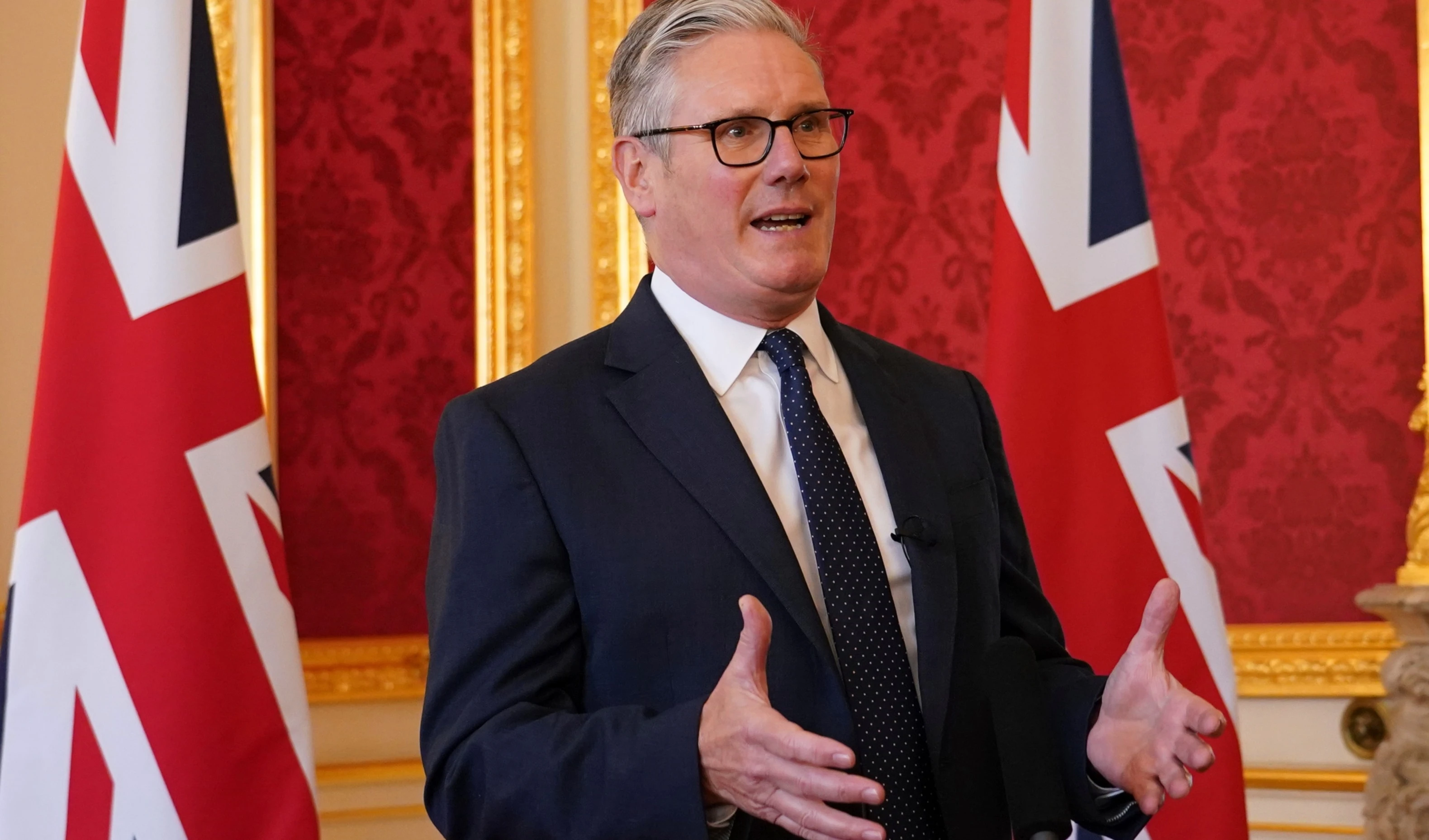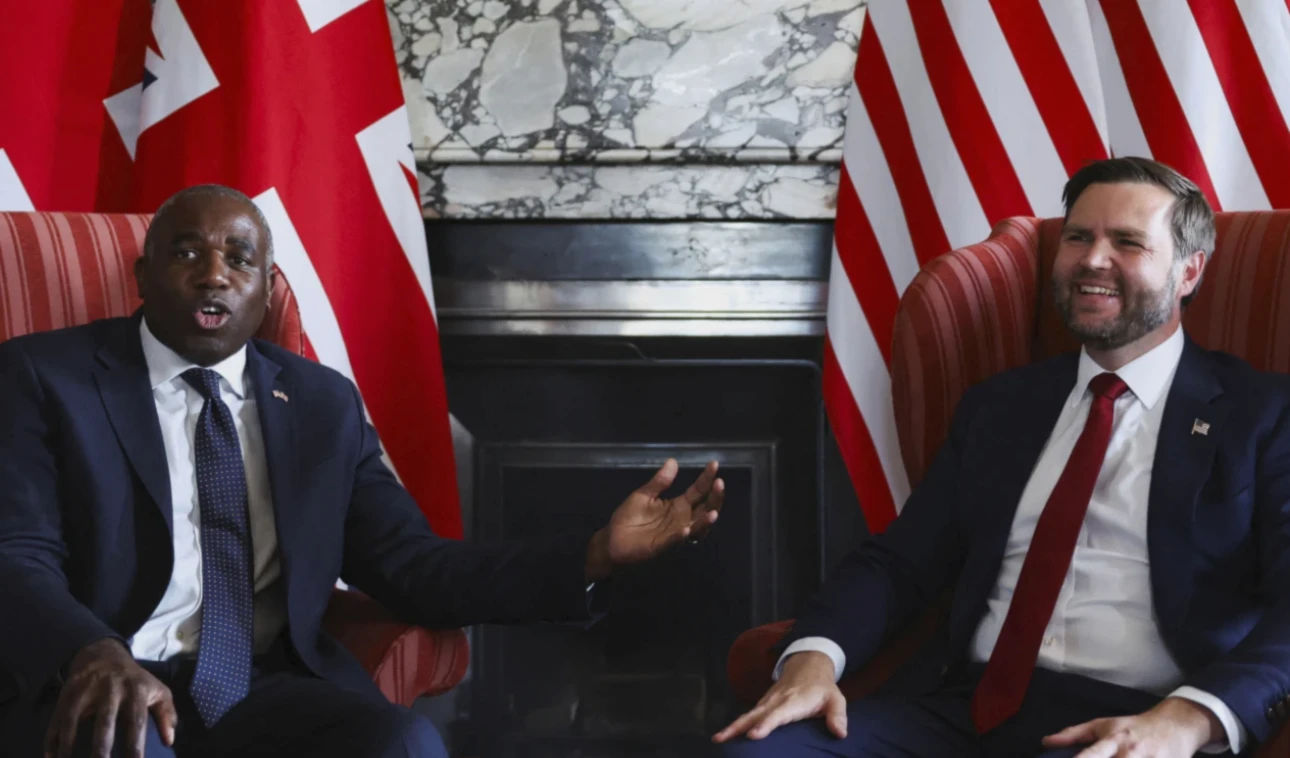Muslim prisoners in England face higher use of force, says charity
Data submitted by the Maslaha social justice charity revealed that Muslims were on the receiving end of most violent force by prison guards, despite being less than 40% of the prison population in some prisons.
-

People hold up a banner during a 'Unity Vigil' against racism and Islamophobia in 2019, backdropped by the gates of Downing Street in London (AP Photo/Matt Dunham)
Muslim prisoners in the United Kingdom are more likely to be subjected to force by jail staff, including the use of pain-inducing techniques, with new data indicating a disproportionate application of such measures, according to The Guardian, which cited a social justice charity on Wednesday.
Freedom of information requests revealed that in eight of nine prisons that have higher than average Muslim populations, Muslim men were more likely than the average inmate to face batons, be made to wear rigid bar handcuffs, or be deliberately restrained in painful positions, according to the findings.
Maslaha, a social justice charity, submitted requests for data from the nine prisons covering the year 2023, and seeking statistics on the use of batons and rigid bar handcuffs, according to the organization.
At Belmarsh, a prison in south-east London frequently used to detain terror suspects, Muslim prisoners accounted for 32% of the population in 2023, while during the same period, Muslim men were involved in 43% of incidents where rigid bar handcuffs were used and 61% of cases involving pain-inducing techniques, according to the data.
At HMP Whitemoor in Cambridgeshire, where Muslim prisoners made up 43% of the population, more than half, 55%, of all instances involving the use of rigid bar handcuffs and pain-inducing techniques throughout the year were directed at Muslim prisoners, according to the figures.
At HMP Isis in Thamesmead, southeast London, where Muslim prisoners represented 45% of the inmate population, more than 57% of incidents involving the drawing of batons and 56% of cases where pain-inducing techniques were used involved Muslim prisoners, according to the data.
At HMP/YOI Feltham B in west London, where Muslim prisoners made up 42% of the population, figures showed they were involved in 53% of cases involving rigid bar cuffs, 57% of incidents where batons were drawn, and 64% of instances where pain-inducing techniques were used, according to the data.
At HMP Woodhill in Milton Keynes, where Muslim prisoners made up 37% of the population, they were subjected to 49% of the uses of rigid bar handcuffs, 63% of the incidents where batons were drawn, and 64% of cases involving pain-inducing techniques, according to the figures.
At HMP The Mount in Bovingdon, Hertfordshire, the use of force against Muslim prisoners was lower compared to the overall population, according to the data.
According to the director of Maslaha, Raheel Mohammed, the data "lays bare the realities of life” for Muslims in prison, claiming they were “being targeted by the use of force, subjected to dangerous pain-inducing techniques, and singled out for deliberately humiliating treatment."
The national chair for the Prison Officers' Association, however, disagrees with the interpretation of the data, claiming that prison staff "only use force at the last resort when necessary, and when it is used, it is always proportionate and reasonable."
Robert Jenrick, the shadow justice secretary, has argued that Islamist gangs are “ruling the roost” in UK jails following the Abedi attack, stating in an interview with GB News that “there should not be these Islamist gangs taking control of our prisons.”
“We recognise the use of force in prisons needs greater supervision and have already introduced mechanisms to reduce the disparities in how it is used. Our new race disparity unit will help tackle racial discrimination further," a Prison Service spokesperson stated.

 4 Min Read
4 Min Read










